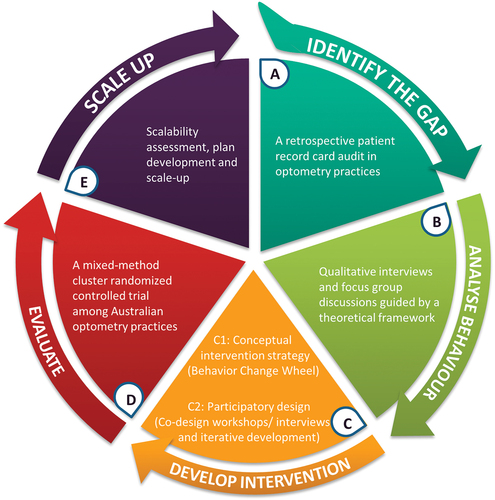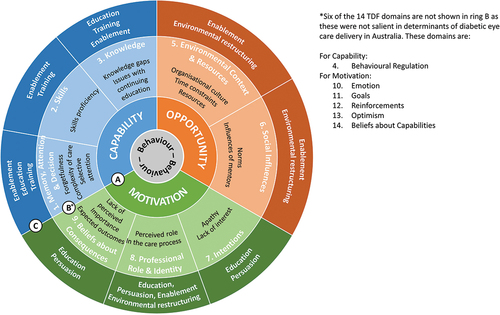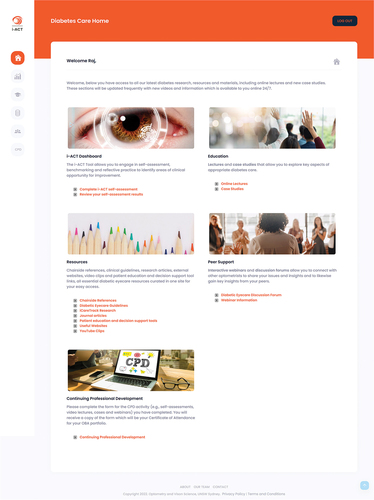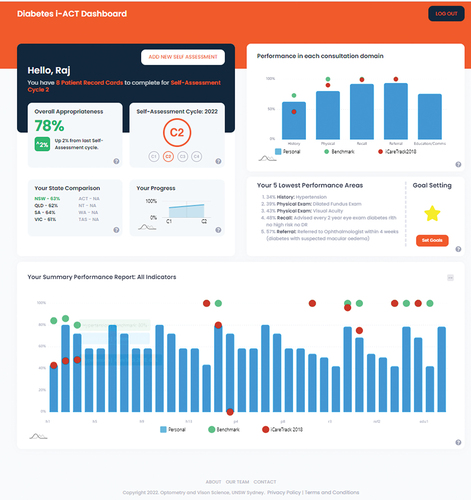Figures & data
Figure 1. Overview of the iCaretrack approach demonstrating the key steps. The process starts with identifying the existing gaps (step A) and analysing the underlying behavioural determinants (step B), followed by developing an intervention using theory and centring around the end-user needs (step C), evaluating the intervention (step D) and finally scaling up the effective interventions (step E) for broader public health impact.

Table 1. Appropriateness levels for glaucoma and diabetic eyecare for consultation domains and overall care.Citation16,Citation18,Citation19.
Figure 2. The Theoretical Domains Framework (TDF) and Behaviour Change Wheel (including COM-B) model used for behavioural analysis and intervention conceptualisation in the iCaretrack approach. The eight salient TDF domains (ring B) are linked to COM-B (ring A). The intervention functions most likely to address these determinants are outlined in ring C (step 1 described in the text). The selected intervention functions need to be further explored to identify the behaviour change techniques (not shown in the figure) which are the core ingredients in an intervention (step 2 described in the text). The BCW model also includes an outermost ring of seven policy categories (not shown in the figure) that support the implementation of the selected intervention functions.

Table 2. Key determinant themes (barriers and enablers) grouped in COM-B components with examples.
Table 3. Overview of the co-design workshops with optometrists and stakeholders.
Table 4. Outline of steps involved in the intervention development process with examples from the diabetes module.
Figure 3. iCaretrack quality improvement program and its components for diabetes module. The glaucoma eyecare module had a similar layout and presentation. The focus of the program was the i-ACT (iCaretrack: assessment of appropriateness in Clinical pracTice) dashboard. Other supporting components included education (lectures and case studies); resources (a curated list of resources developed by the research team as well as links to external resources), and peer support activities (webinars and discussion forums).

Figure 4. Diabetes i-ACT (iCaretrack: assessment of appropriateness in Clinical pracTice) dashboard for optometrists. The glaucoma dashboard had a similar layout and presentation.

